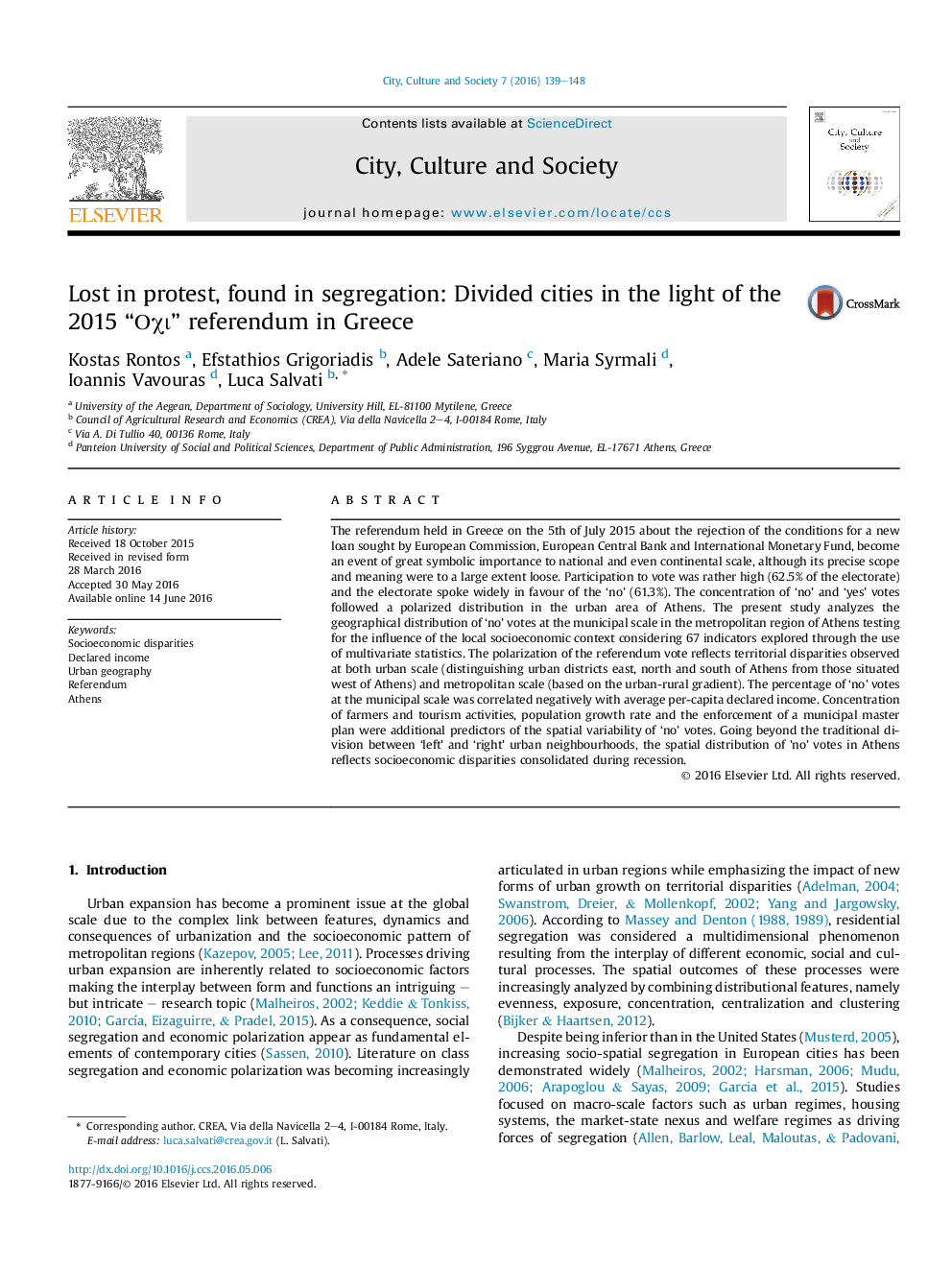| کد مقاله | کد نشریه | سال انتشار | مقاله انگلیسی | نسخه تمام متن |
|---|---|---|---|---|
| 5048229 | 1370991 | 2016 | 10 صفحه PDF | دانلود رایگان |

- The spatial distribution of 'no' votes well reflects the socioeconomic polarization in Athens.
- Social disparities and economic polarization are traditionally associated to the west-east gradient.
- The consolidated socio-spatial trends indicate persisting disparities in Athens since World War II.
- The study highlights the contrast between peri-urbanization processes and social mixité at the local scale.
The referendum held in Greece on the 5th of July 2015 about the rejection of the conditions for a new loan sought by European Commission, European Central Bank and International Monetary Fund, become an event of great symbolic importance to national and even continental scale, although its precise scope and meaning were to a large extent loose. Participation to vote was rather high (62.5% of the electorate) and the electorate spoke widely in favour of the 'no' (61.3%). The concentration of 'no' and 'yes' votes followed a polarized distribution in the urban area of Athens. The present study analyzes the geographical distribution of 'no' votes at the municipal scale in the metropolitan region of Athens testing for the influence of the local socioeconomic context considering 67 indicators explored through the use of multivariate statistics. The polarization of the referendum vote reflects territorial disparities observed at both urban scale (distinguishing urban districts east, north and south of Athens from those situated west of Athens) and metropolitan scale (based on the urban-rural gradient). The percentage of 'no' votes at the municipal scale was correlated negatively with average per-capita declared income. Concentration of farmers and tourism activities, population growth rate and the enforcement of a municipal master plan were additional predictors of the spatial variability of 'no' votes. Going beyond the traditional division between 'left' and 'right' urban neighbourhoods, the spatial distribution of 'no' votes in Athens reflects socioeconomic disparities consolidated during recession.
Journal: City, Culture and Society - Volume 7, Issue 3, September 2016, Pages 139-148